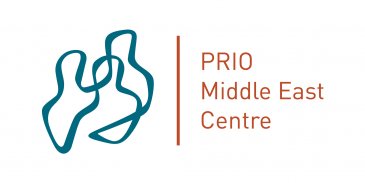 In a series of brief blog posts, researchers of the PRIO Middle East Centre offer their reflections on the unfolding Israeli-Palestinian Conflict.
In a series of brief blog posts, researchers of the PRIO Middle East Centre offer their reflections on the unfolding Israeli-Palestinian Conflict.
As in the waves of anger that erupted in October 2015 and July 2017, the current popular action in Jerusalem represents resistance politics in its most vibrant form.
These contentious collective actions in Jerusalem sparked and inspired an uprising-in-the-making across Palestine that aims to address causes of Palestinian fragmentation and to unify the political will and means of struggle in face of Israeli settler colonialism and Apartheid.
These confrontational actions aim to reset the parameters of the so-called Palestinian-Israeli conflict, and address the power imbalances between the colonized and the colonizer.
A new generation is leading this dauting task, as they build and solidify their visions, strategies and program for the future. They are doing so by anchoring their actions in a collective participatory leadership model that the current political regime in Palestine lacks.
The 18 May general strike across Palestine, called and led by non-conventional political actors (new emerging youth-led groups), the level of commitment toward this call, the launch of The Dignity and Hope Manifesto, the powerful narrative emerging and featured on mainstream written and televised media by Palestinian analysts, the leading role of Palestinian women at the forefront in all these ongoing efforts, the ability to mobilize across and over the so-called “Green Line” despite all the mechanisms of control and repression, the emergence of youth-led groups such as the Generation for Democratic Renewal, and the rejection-via-actions to shrink the Palestinian people to those isolated in the “Oslo framework prison”, are all examples of an evolving new dynamic that could be transformed into a political opportunity if sustained, endorsed, and adopted by large segments of the Palestinian people.
Such developments and dynamics might be “invisible” at this stage, especially with the very visible crimes piling up in the Gaza Strip. Yet, we should not dismiss these “invisible” attempts, even if they are in their infancy, as they are avenues to hope amid escalating pain.
The ongoing cycle of confrontation is already generating early signs that have been sorely missed as far as the Palestinian struggle for self-determination and liberation is concerned. Capitalizing on these signs is imperative in order to engage in a process of positive future change.
Palestinian youth wanted to express their views in an election that was slotted for 22 May. Neither Israel, the international community nor the Palestinian conventional political leadership allowed these elections to take place via the ballot box. Yet, we could argue that nowadays the streets of Palestine (all Palestine) are the biggest ballot box, and the Palestinian youth are attempting to dictate the avenues for their future.
“Liberation is within our reach” is the slogan they carry. Certainly, this does not imply that liberation is around the corner. But it means that the compass is pointing away from the notion of statehood, the Oslo Accords framework, and the detrimental status quo. And this is a source of hope – amid the escalating pain and the piles of crimes – that we should not dismiss or ignore.